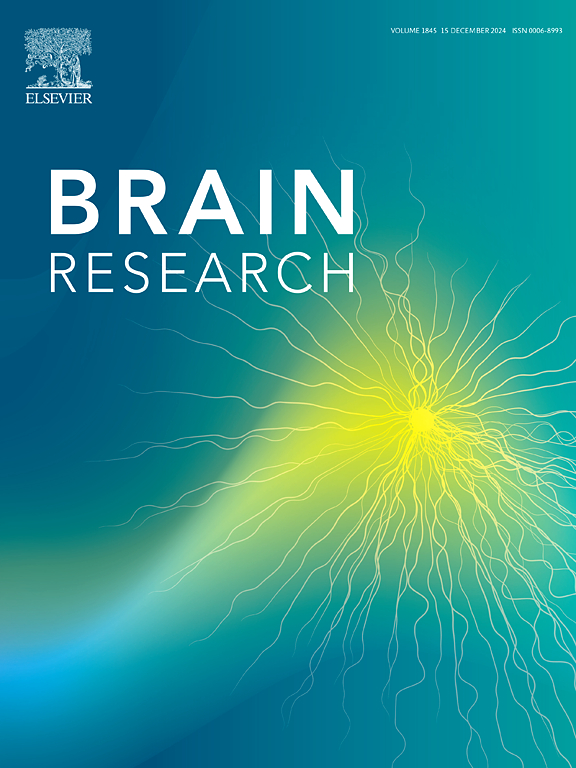Early body representation EEG signals in cervical vs. thoracic spinal cord injuries with neuropathic pain
IF 2.7
4区 医学
Q3 NEUROSCIENCES
引用次数: 0
Abstract
Spinal cord injury (SCI) not only causes severe sensorimotor impairments but also leads to disruptions in body representation, including body schema. While the neurological differences between cervical and thoracic injuries are well established, the impact of the level of injury on body schema is less understood. Deeper insights into how change in body schema is affected by injury severity may further individual rehabilitation strategies and outcomes for individuals with SCI. This study explores event-related potentials (ERPs) between individuals with cervical and thoracic injuries in response to body-related and non-body-related stimuli presented in two rotation angles (easy: 75° and difficult: 150°) while completing a laterality judgment task. Individuals with cervical injury showed reduced amplitudes of posterior P100 and anterior N100 compared to the thoracic group only when the body-related stimuli were presented in a difficult rotation angle. We discuss that the variations in early modulation of ERPs can be attributed to the underlying sensorimotor challenges associated with different levels of injury. This work enhances our understanding of cognitive processing in SCI populations to better inform rehabilitation strategies.

颈、胸脊髓损伤伴神经性疼痛的早期体表征脑电图信号
脊髓损伤不仅会导致严重的感觉运动障碍,还会导致身体表征(包括身体图式)的中断。虽然颈椎和胸椎损伤之间的神经学差异已经得到了很好的证实,但损伤程度对机体图式的影响尚不清楚。对身体图式变化如何受损伤严重程度影响的更深入的了解可能会进一步促进脊髓损伤患者的个体康复策略和结果。本研究探讨了颈椎和胸椎损伤个体在完成侧度判断任务时,在两个旋转角度(简单:75°和困难:150°)呈现的身体相关和非身体相关刺激下的事件相关电位(erp)。与胸椎组相比,只有当身体相关刺激以困难的旋转角度呈现时,颈椎损伤个体的后P100和前N100的振幅才会降低。我们讨论了erp早期调节的变化可归因于与不同程度损伤相关的潜在感觉运动挑战。这项工作增强了我们对脊髓损伤人群认知加工的理解,从而更好地为康复策略提供信息。
本文章由计算机程序翻译,如有差异,请以英文原文为准。
求助全文
约1分钟内获得全文
求助全文
来源期刊

Brain Research
医学-神经科学
CiteScore
5.90
自引率
3.40%
发文量
268
审稿时长
47 days
期刊介绍:
An international multidisciplinary journal devoted to fundamental research in the brain sciences.
Brain Research publishes papers reporting interdisciplinary investigations of nervous system structure and function that are of general interest to the international community of neuroscientists. As is evident from the journals name, its scope is broad, ranging from cellular and molecular studies through systems neuroscience, cognition and disease. Invited reviews are also published; suggestions for and inquiries about potential reviews are welcomed.
With the appearance of the final issue of the 2011 subscription, Vol. 67/1-2 (24 June 2011), Brain Research Reviews has ceased publication as a distinct journal separate from Brain Research. Review articles accepted for Brain Research are now published in that journal.
 求助内容:
求助内容: 应助结果提醒方式:
应助结果提醒方式:


